
subtrist
adj. somewhat sad

subtrist
adj. somewhat sad
Two numbers are said to be betrothed if the sum of the proper divisors of each number is 1 more than the value of the other. For example:
The proper divisors of 48 are 1, 2, 3, 4, 6, 8, 12, 16, and 24. 1 + 2 + 3 + 4 + 6 + 8 + 12 + 16 + 24 = 76 = 75 + 1.
The proper divisors of 75 are 1, 3, 5, 15, and 25. 1 + 3 + 5 + 15 + 25 = 49 = 48 + 1.
Interestingly, in all such pairs discovered so far, one number is odd and the other even. Is this always the case? That’s an open question.
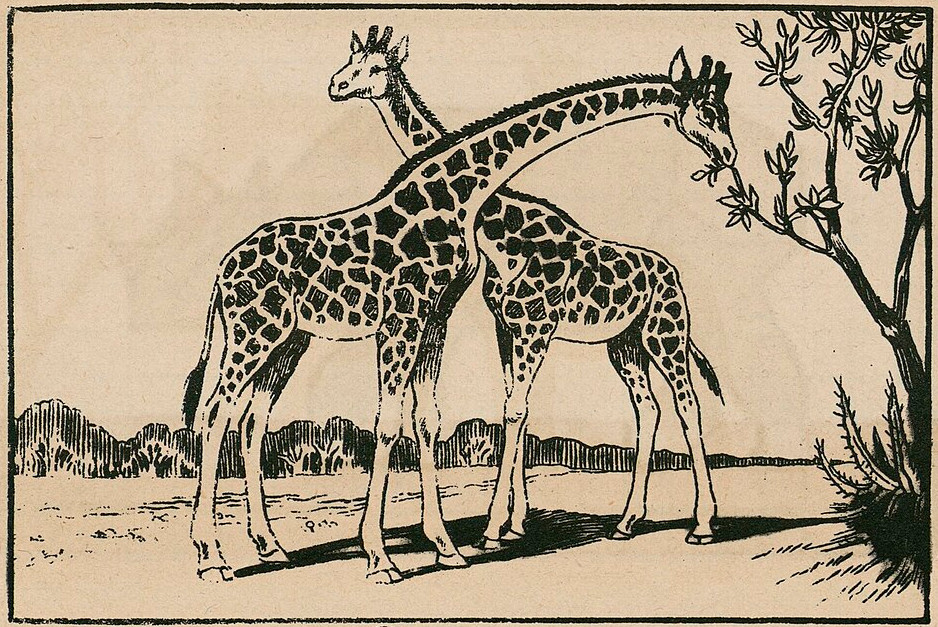
Art is limitation; the essence of every picture is the frame. If you draw a giraffe, you must draw him with a long neck. If, in your bold creative way, you hold yourself free to draw a giraffe with a short neck, you will really find that you are not free to draw a giraffe.
— G.K. Chesterton, Orthodoxy, 1908
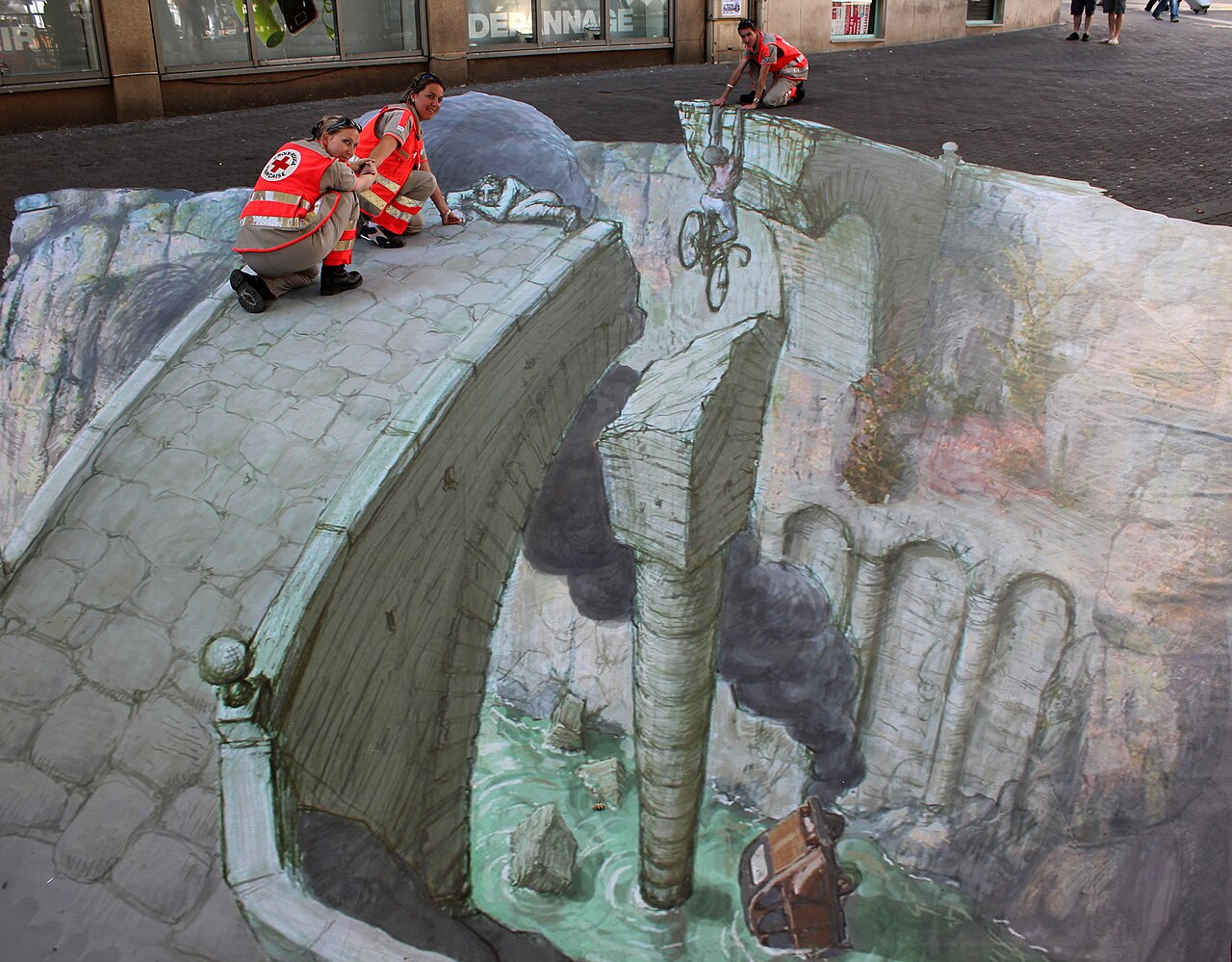
Argentinian artist Eduardo Relero created this alarming drawing on a street in Nancy in 2012 to mark World First Aid Day for the French Red Cross.
From Lee Sallows:
Numerical panmagic squares of 3×3 being impossible, the above square is in fact the first known order-3 panmagic square, a boast it can enjoy until the day that someone comes up with an improved solution. Such as one using all nine connected pieces, say.
Or not, perhaps? For the square above has a further property that other panmagic squares may not possess. Choose any three of the four corner pieces. There are four possibilities: aci, cig, agi and acg. Whatever your choice, the three pieces selected will tile the target.
(Thanks, Lee!)
The names of 13 Jane Austen characters are hidden in the following lines as anagrams of complete consecutive words. For example, “was ill” yields WALLIS. (The names to be found are women’s first names and men’s surnames, as in Austen.) In most cases the anagrams are hidden in two words, but twice they’re in three, once in four, and once in a single word. What are they?
The other day when I was ill
And not a soul I knew came nigh,
Jane Austen was my daily fare —
I rather liked to be laid by.
Each line or page enthralls me quite,
I there can let no man deride;
I may be ill as a wight can be,
But, Jane with me, am satisfied.
In bed my ease is nil, yet I’ll
Be lying therein at any rate
Content. With Jane to chortle at
How can I rail at Fate?
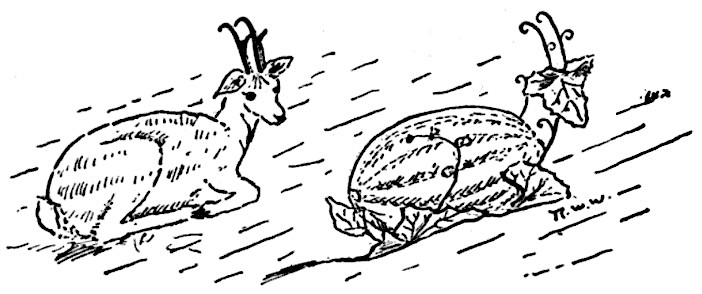
The Antelope and Cantelope
Lie side by side upon the slope,
And careless persons might, I fear,
Mistake the melon for the deer.
If you will tap the Cantelope, reposing on the ground,
It does not move, but just emits a melon-choly sound;
But should you try, however, to apply a stethoscope,
And attempt this auscultation on the antlered Antelope,
And should see an imitation of a very rapid flight,
And should say, “It is the Antelope!” I think you would be right.
From Animal Analogues (1908), by Robert W. Wood, author of How to Tell the Birds From the Flowers.
Byron swam the Hellespont. On May 3, 1810, the 22-year-old poet and a Lieutenant Ekenhead of the frigate Salsette swam the breaststroke from Sestos to Abydos, crossing from Europe to Asia in an hour and 10 minutes as they sought to emulate Leander’s nightly swims to Hero. “The whole distance … including the length we were carried by the current, was computed by those on board the frigate at upwards of four English miles.”
“I plume myself on this achievement more than I could possibly do on any kind of glory, political, poetical, or rhetorical,” Byron wrote. He commemorated the feat in Don Juan:
A better swimmer you could scarce see ever,
He could, perhaps, have pass’d the Hellespont,
As once (a feat on which ourselves we prided)
Leander, Mr. Ekenhead, and I did.
The feat is often regarded as a founding achievement in open-water swimming, and an event is held each year in its memory.
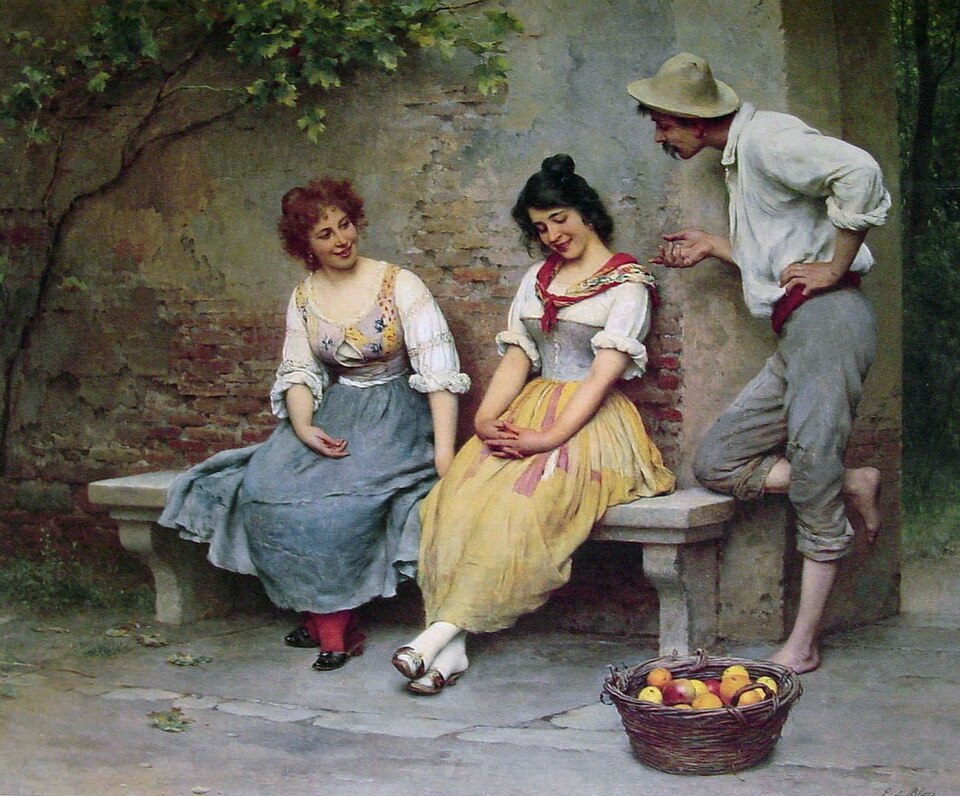
“It has been said that love robs those who have it of their wit, and gives it to those who have none.” — Diderot
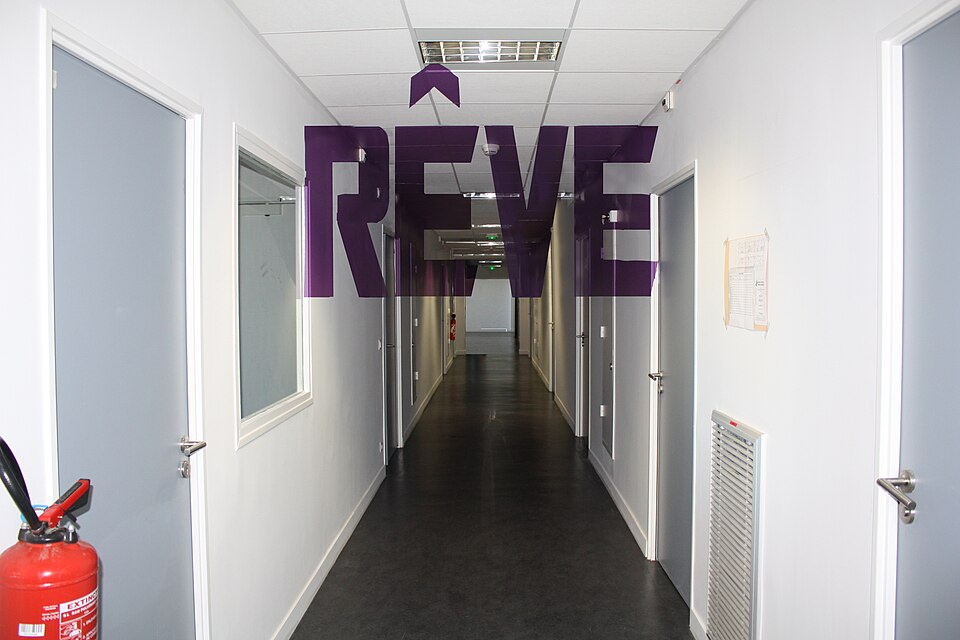
In Marseille’s Salvator Hospital, the French word for “dream” seems to hang in the middle of a corridor.
It’s an anamorphic illusion — the letters are painted on the walls and ceiling to appear in perspective as an ordinary font when viewed from the correct angle.
